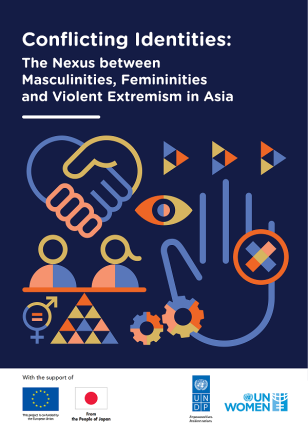Conflicting Identities: The Nexus between Masculinities, Femininities and Violent Extremism in Asia

ENG
DownloadConflicting Identities: The Nexus between Masculinities, Femininities and Violent Extremism in Asia
March 25, 2020
Violent extremism has emerged as one of the leading challenges to the realization of sustainable peace globally. Across South and South-East Asia, violent extremism poses a direct threat to inclusive development by fuelling intolerance, forcibly displacing communities, exacerbating cycles of insecurity and armed conflict, exploiting existing inequalities, and obstructing the enjoyment of human rights and the rule of law. Underpinning this violence are gender stereotypes that are used to radicalize and recruit men and women, as well as girls and boys, to violent extremist groups.
UNDP and UN Women have been working to ensure that efforts to prevent violent extremism are inclusive and based on the promotion and protection of human rights, including women’s rights. This research is the result of a joint effort between both agencies to better understand the relationship between violent extremism and gender power relations in South and South-East Asia, specifically as it relates to radicalization and recruitment, in order to inform programming and policy responses.
This publication includes expert analyses through case studies to highlight how unequal gender power structures fuel and shape violent extremism around the region. It emphasises how structures of patriarchy and harmful performances of masculinity are deeply embedded in the modus operandi of violent extremist groups. It offers policy makers and practitioners a unique insight into the gender dynamics that underpin violent extremism in South and South-East Asia. It will benefit stakeholders working in this area to ensure that holistic understandings of gender identity are integrated into policy and programming approaches to prevent violent extremism.

 Locations
Locations




